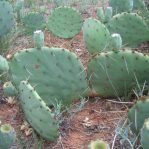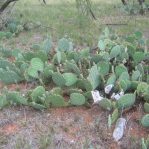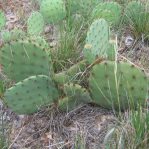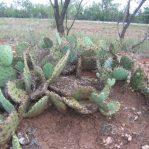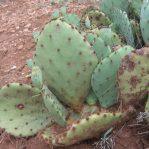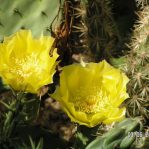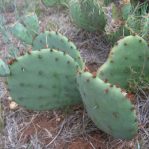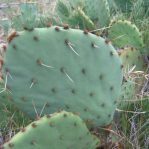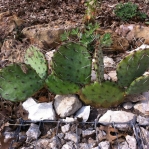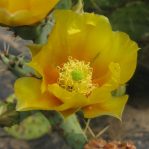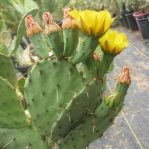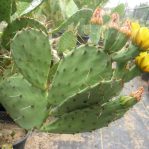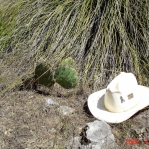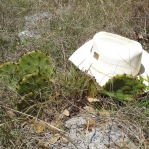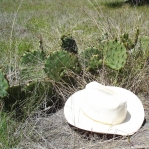
Griffiths, Proceedings of the Biological Society of Washington 27: 26, 1914
Original Description
What is Opuntia Sanguinicola?
O. sanguinicola is a Texas prickly pear cactus that prefers deep soils (limestone-derived) as opposed to the rocky soils preferred by O. gilvescens or other possibly related opuntias.
Details
Plants may be 20 to 40 cm tall and spread to 1 m. Spines are often restricted to the sides and upper 1/4 of cladodes. Areoles have 0-2(3) spines, mostly less than 2.5 cm in length. The smaller spine may sweep downwards towards last year’s growth. Spine color varies with older spines being gray or gray at the tips and brown at the base, and newer spines are yellow changing to red-brown at the base. A few plants have darker spines. Cladodes vary in size, perhaps 8 by 11 cm or even 9 by 20 cm, being obovate or sometimes subcircular. Cladodes may be violet-green in winter. Leaves are relatively large at 10 to 12 mm. Glochids are reddish when new but are gray, tan, or white-gray with age. They are distributed in a distinct pattern–as a compact tuft in the center of the areole (unusual distribution).
The flowers are bright yellow with deep red centers. The filaments are yellowish or greenish, and the stigma is white. Flowers of this Opuntia are 6 to 7 cm in diameter.
Ploidy is unknown.
Other Details
O. sanguinicola is yet another yellow-flowered Opuntia overlooked by most and, if seen, assumed to be O. phaeacantha because the two are of similar size. Plants are not uncommon in central Texas but are difficult to find in tall grass.
This Opuntia is grown in some Texas gardens where it is appreciated for its bright flowers. It flowers well at a small size.

